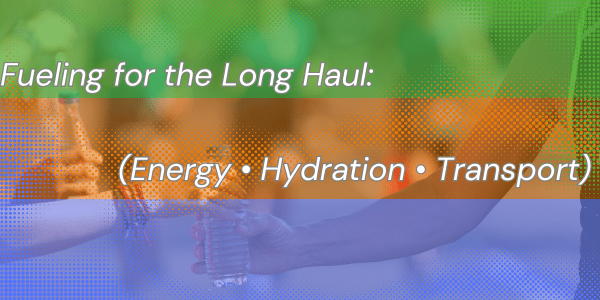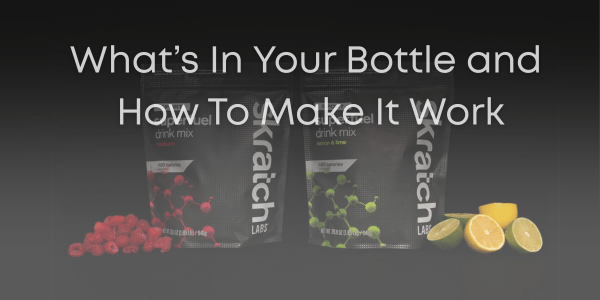Fueling for the Long Haul: Hydration, Calories, and Sodium Strategies for Endurance Athletes

From early race day mistakes to age-group wins — what I’ve learned about long-course fueling that you can use right now.
Back in 1997, I did my first Ironman. I trained hard. I showed up ready. And five miles into the marathon, I projectile vomited five times.
Not just once. Five. Times.
Needless to say, things went downhill from there. But at the time, sports nutrition for events that long was still in its infancy — we really didn’t know what we were doing. We just tried to eat and drink whatever we could get down and hoped it would work.
That race taught me a lot: whether you’re training for a triathlon, gravel race, or your longest run of the season, how you fuel will directly impact how you perform—and how you feel during and after. The challenge? Most athletes either don’t have a plan or are relying on someone else’s.
This 3-part approach—Energy, Hydration, and Transport—simplifies endurance nutrition and helps you train smarter so you can race strong and recover well.
Part One: Energy (Calories, Carbs, Fuel)
Energy refers to the calories your body needs to sustain movement, focus, and effort. Most of this comes from carbohydrates during endurance events—but how much, and how often?
- Aim for 30–90g of carbs per hour, depending on your event length and intensity.
- Practice in training to learn what your gut tolerates best.
- Fuel early—waiting until you’re tired or hungry means you’re already behind.
💡 Pro Tip: Don’t try to match exact calorie burn—focus on consistent intake over time.
Part Two: Hydration (Water)
How much should you drink?
Hydration isn’t just about how much you drink—it’s about replacing sweat loss, supporting temperature regulation, and ensuring nutrient transport.
- Sweat rates vary—some athletes lose 500ml/hour, others over 1.5L.
- Start with a baseline: 500–750ml of fluid per hour for moderate conditions, and adjust based on effort, heat, and sweat test data if you have it.
- Track your weight before and after long sessions to gauge fluid loss.
- You might fall a bit behind. If a sweat test shows your sweat losses exceed any reasonable ability to replace that fluid volume, make every effort to show up at race start well hydrated.
💡 Pro Tip: Be mindful not to overhydrate—too much plain water without sodium can lead to hyponatremia.
Part Three: Transport (Electrolytes + Bottles, Packs, Aid Strategy)
What are your electrolyte sources?
This is where everything comes together. Electrolytes are essential for moving fluid and carbs into your cells—but they need a delivery system that works in training and racing.
This part of the plan answers questions like:
- Where do your electrolytes come from—drink mix, capsules, food?
- Are your bottles marked and measured so you know how much you're getting per hour?
- How will you carry or refill fluids on the bike or run?
- Are you using aid stations effectively?
Shop electrolyte options: https://elementsport.ca/collections/nutrition-products
How can you carry it with you?
For hydration and drinks, consider your bike set up. There are options for carrying fueling battles in your frame but also in your cockpit and off your saddle. For shorter races, you can often carry all of your fuel with you but for longer races, you need to plan what the refill options are at race aid stations.
For carbohydrates and electrolytes, consider the sources and quantities you will need and sort out how and when you will get them. Consider:
- What can you carry with you?
- What can you supplement at aid stations during races?
- What can you supplement stops available during training?
- Does the race have special needs stops?
💡 Pro Tip: Dial in your setup during training, not on race day. That includes your bottle system, mixing routine, and backup strategies.
Wrapping Up: Test, Tweak, Train, THEN Race
Don’t wait until race week to figure this out. Nutrition is a performance skill—it needs reps just like workouts do.
If you want support building a plan that works for your training, your gut, and your goals, I’d love to help. We’ll take your current strategy (or lack of one) and turn it into a confident, tested approach you can rely on.
📩 Talk to Us About Your Race Strategy. DM me or stop by the shop—let’s talk race fuel.




Comments